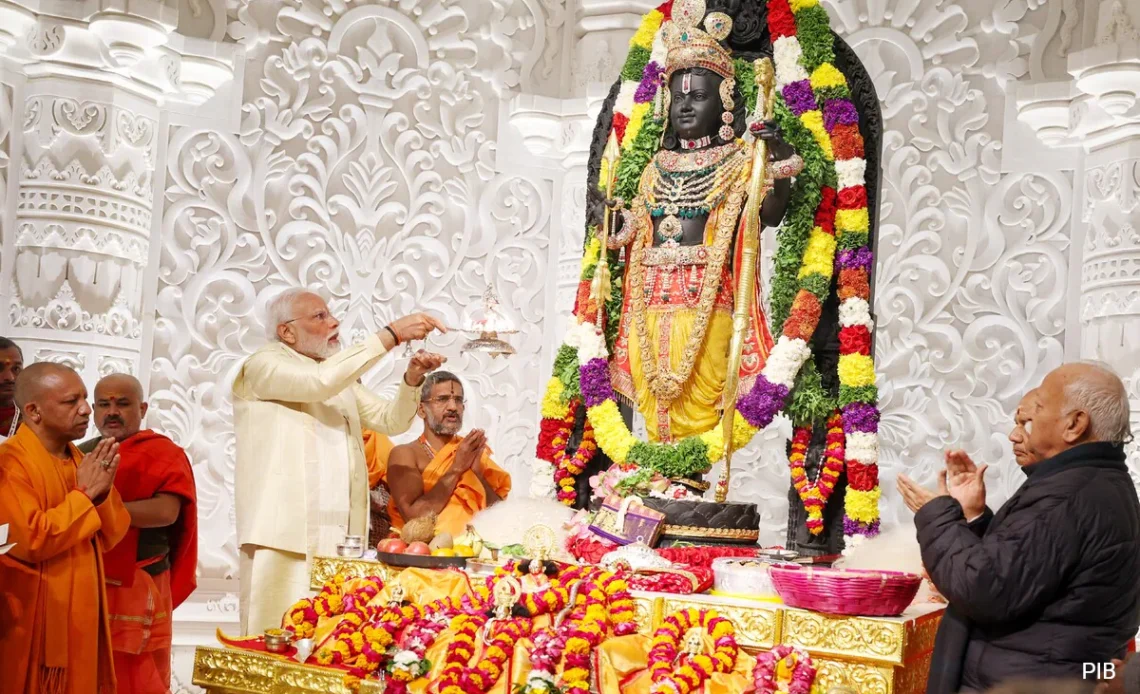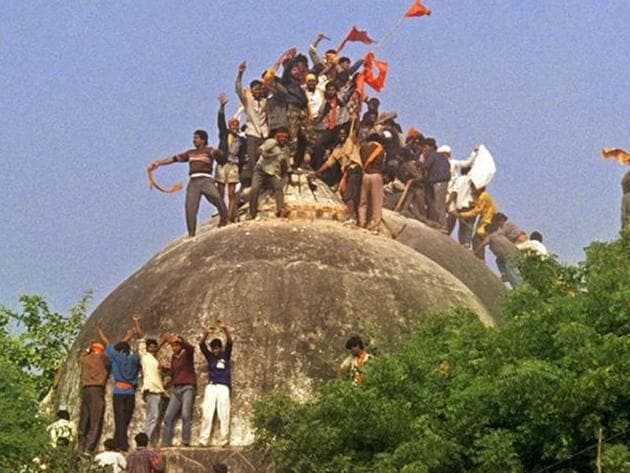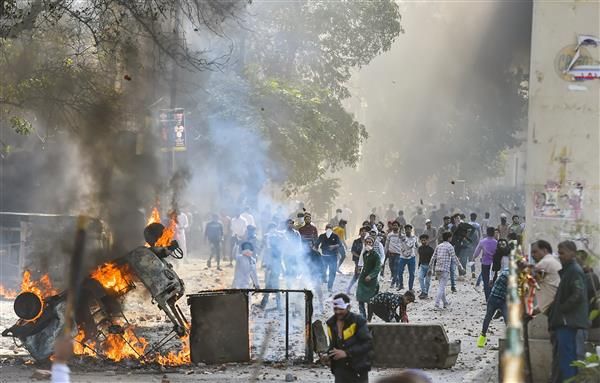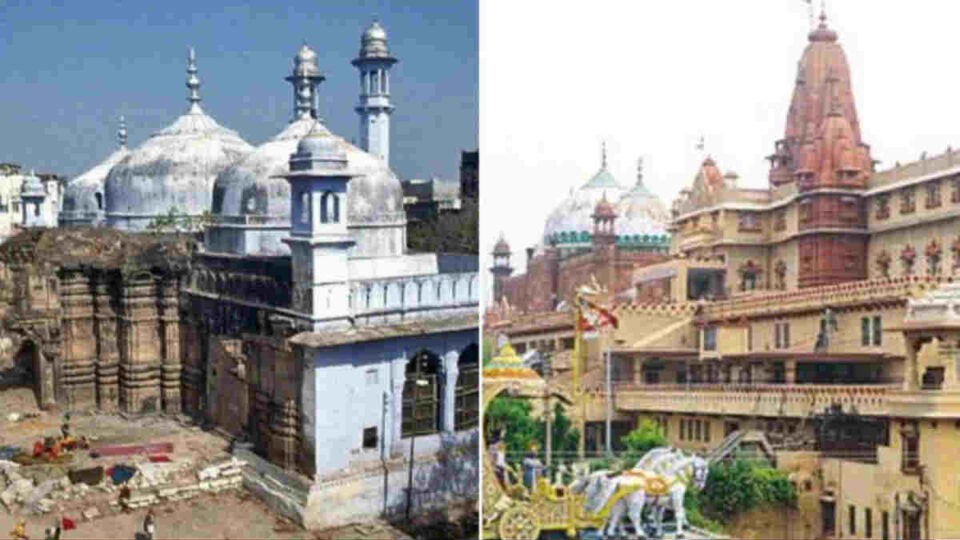
January 22, 2024, will go down as a historic date in Indian history. On this day, the grand Ram Mandir was inaugurated at the “controversial” site in Ayodhya. What made the occasion even bigger, was some prominent names from India’s ruling BJP and its ideological father RSS, led by Prime Minister Narendra Modi himself, taking the lead at the consecration or the ‘Pran Pratistha’ ceremony. January 22 has also given a fair idea, of what this ‘New India’ looks like and will like in the coming future.
Brief History
The historical evidences say that the Babri Masjid was in place since the 16th century (1520s), however, no evidence confirmed if it was built by Babur or someone else in his name. Under Mughal rule, the ‘Ram Janmabhoomi’ point never came up for obvious reasons. It was only around 1857 that the first recorded communal incident regarding the issue occurred. It is also claimed by some, that the whole issue was fanned by Britishers only to create a much-needed rift among Hindus and Muslims.
Amid boiling tensions, the British administration had allowed Hindu priests to visit the place, but only on the outside structures on the premises. Muslims were allowed to offer the Namaz on Fridays, under police protection. However, a significant and disturbing episode from 1949 saw a huge Hindu mob placing Ram idols inside the temple. After this, the situation changed completely, as Muslims never offered Namaz there. Quite understandably, the whole exercise was carried out to bar Muslims from entering the premises. And, outrageous claims were even made that the idols had ‘appeared’ on their own.
This was the status quo for a long time and could have been so, if not for Rajiv Gandhi. The then Prime Minister circumvented the Supreme Court order of 1985 in the Shah Bano judgement (denying alimony to Muslim wives due to Triple Talaq). So, to compensate for it ‘politically’, Rajiv in 1986, ordered the opening of the gates of the disputed Ayodhya site and allowed Hindu devotees to offer prayers. But, all this backfired, he lost in 1989 and BJP-RSS got their biggest political opening, wholly centred around the ‘Ram Janmabhoomi’ movement.
Thousands of people (called Karsevaks), with no concern for career or life, started coming out with huge demand for a Ram Mandir, in place of the mosque. Amid boiling communal furore, UP police (under CM Mulayam Singh) unable to control the crowd opened fire killing many Karsevaks. Finally, on 6th December 1992, it was under a BJP-led government in UP with Kalyan Singh, as CM, that the whole ‘Rathyatra’ thing was orchestrated after which the Hindu mob got “out of control” and demolished the whole mosque. This time, the police only played the role of spectator. This was followed by severe riots across the country, especially in UP and Mumbai, in which hundreds of innocents from both sides were slaughtered. In retaliation of riots, gangster Dawood Ibrahim carried out 1993 bomb blasts again killing many.

A group of zealots brought down the ancient Babri Masjid in Ayodhya in 1992 (Photo: The Hindustan Times)
What the Supreme Court said in 2019?
The top court in a historic ruling, ordered a Ram Mandir to be built at the disputed site in 2019. The Muslim side was also given an alternative piece of land in Ayodhya. The order was based on the historic and archaeological survey of the site, which had confirmed the presence of Hindu structures much before the mosque came into existence. However, there were some notable points in the order that need to be remembered.
Firstly, the court found the existence of temple-like Hindu structures at the site till the 12th century but the mosque came into place only in the 16th century. So there is a gap of 400 years that fails to explain how the temple came to an end. The court explicitly stated that there is NO PROOF that the mosque was constructed by demolishing the temple. But, still the narrative of ‘Babur ke aulad’ continues to be spread by the right wing. It was also not proved in the court that the site is actually the birthplace of Ram. Another very crucial aspect highlighted in the SC judgement was the 1992 demolition, which the apex court called an “egregious violation of the rule of law” and a “criminal act” which shook the secular fabric of the country and rightly so.
)
The grand Ram Mandir inaugurated in Ayodhya is expected to turn out as a major Hindu shrine (Photo: Business Standard)
A Watershed Moment
Irrespective, of which side your opinion stands on the issue, there is little doubt that January 22 marked a ‘watershed moment’ in Indian history. Hardly any incident of the past matches the grandeur of that day, and I doubt, any will do so in the future. Tens of thousands of people, completely immersed in emotions, watching the event and celebrating it like Diwali was an unmatchable feat.
Looking at the sheer magnitude of the event, one can only imagine the political capital, the BJP has accumulated just before the Lok Sabha elections. Although much of it has been earned after years of effort, which often had catastrophic consequences for the country, this being the final delivery of one of BJP’s core ideas, will not just satisfy its own voters but the effect will also spillover to a huge number of non-committed voters too.
BJP will play its whole campaign on the Ram Mandir (plus some polarisation). It has left the opposition completely ‘clueless’ as no other agenda or issue seems to be even among consideration at the moment among the ‘Rammay’ public. Because of this, even opposition parties which didn’t attend the event, are in some way or the other trying to remain on the side of ‘Ram’. Congress, I have to say, took a very bold and courageous step by declining the invitation. Although, logically it was the right thing to do because there was zero gain for the party in a completely “BJP-RSS centric political event” the stand has few takers today and the political score of such a decision will sadly, be only negative for the party.

Prime Minister Narendra Modi from the day of Ram Mandir consecration at Ayodhya (Photo: NDTV)
Blurring of line between State and Religion
Pandit Jawaharlal Nehru, India’s first Prime Minister, despite being a strong followed of Hinduism himself (a Pandit indeed) believed that there must be a distance between the government and religious events: Firstly, as it might give a wrong message to the minorities and secondly, it is not the job of the government to build temple and other religious structures. He even said once, “Institutions like IIT and AIIMS, that I am making, are the temples of ‘Modern India.'” Nehru was also against participating in the inauguration of the Somnath temple, but many leaders of his own party, including then President Rajendra Prasad did participate there eventually.
Now, this grand consecration ceremony on January 22 was significant in many ways. This time, the Prime Minister of the country was openly inaugurating the temple, which had such a polarising past. This effectively blurred all the lines (if any) between the state of the country (government) and religion followed by the majority and marked a sharp reversal from the Nehruvian idea and put India on a whole new pedestal, where the top leader doesn’t shy away from wearing his religion on the sleeve, even if the site is as controversial as this one. Also, whether one likes it or not, Mr Modi leading the event has changed the idea of ‘secular’ India as it was envisioned by the makers of our Constitution and given a trailer of the RSS-inspired ‘Hindu Rashtra’.

Hundreds of thousands of innocents laid down their lives in the riot’s aftermath of demolition (Photo: Tribune India)
‘January 22’ instances I find problematic
Firstly, the way the event was celebrated. I mean, it’s fine to be passionate about something, but one has to keep the whole story in mind. The temple was made by razing down a mosque by a group of zealots, it sparked massive communal riots, killing thousands and did reprehensible damage to the secular fabric of the country. The main argument that many will present is ‘The temple was built as per the court order’. Yes, the SC did give the judgement in favour of the temple, but the apex court also called the Babri demolition a “criminal act”. So, you can’t be effectively celebrating the temple in the name of judgement and have no remorse for the demolition.
The dark and bloody past that the temple has, needs to be acknowledged for actually moving on from all the bitterness. And, I am not even going into all the literal hooliganism on streets, religious places and even inside educational institutions.
Secondly, it is also wrong on the side of many Muslims to somehow, believe that no Hindus should even celebrate or be happy about the temple. Yes, I genuinely accept that whatever happened was wrong, and yes I agree that BJP-RSS throughout used the agenda for their interest, making it a complete political event. But, that doesn’t mean that over 80 crore people in the country should be barred from celebrating a temple, that they have such deep emotions attached to.
Many Muslim scholars have argued, that the Muslim side should have voluntarily given the land to the Hindus back during the time of agitation itself. It would have saved so many lives and had also presented an unmatched display of secularism. Even if that didn’t happen, one doesn’t get the right to judge people just because they put a status celebrating the temple. If Hindus glorifying the demolition are wrong (despite SC condemning it), so are the Muslims deploring the consecration (of a temple built on SC order).
Lastly, as I also pointed out above, there has to be a gap between the state and the religion, even if those running the state belong to the religion practised by the majority. Prior to the consecration ceremony, Mr Modi was on an 11-day fast and was visiting other ancient places related to Lord Ram. I mean, if only this much focus was shown on India’s Covid preparation, or towards the country’s economy, I wonder where our country would have reached today.
Yes, one can argue that why can’t someone do both (development and religion). Fine, but again, it is not the responsibility of the government to focus on temples which were demolished 500 years ago. The priority needs to be towards improving education, R&D (among the lowest in the world), the health sector (we rank at 102 in the Hunger Index) and other things that can take us forward. If the ruling party, the biggest leader of the country, starts putting the whole focus on a temple, the whole country will also forget their priorities, which unfortunately has been the case today. Citizens who can’t demand schools, hospitals, or jobs from their government are mere puppets and this is a very dangerous trend for the country.

The disputed structures in Varanasi and Mathura, where BJP-RSS have their eyes set next (Photo: Sabrang India)
The Aftermath
All the grievances that I had, could have been laid to rest, had it been the end of the story. As many might be aware, the BJP and Hindu side are going berserk in their demand for temples at the disputed sites in Varanasi (Gyanvapi Mosque) and Mathura (Shahi Idgah Mosque). Legally, the Places of Worship Act (1991) bars from changing the religious nature of any place from what it was on 15th August 1947, (Ram Mandir was an exception because the case entered the court before independence).
The Hindu side has already obtained permission to pray inside the mosque premises after the ASI survey found evidence of a Hindu temple beneath the mosque. While a similar plea has been rejected in the case of Shahi Idgah mosque, we know the BJP can bring legislation or amendment against the above-mentioned act to change the course. The question is when will all this end? Will the Hindu side really stop after these three temples? This is a very dangerous pandora’s box that has been opened. The public instead of focussing on development, is busy in demanding temples and the state is also happy in dealing with the matter of its ‘interest’.
Future in the ‘Ram Rajya’
“दैहिक दैविक भौतिक तापा | , राम राज्य नहीं कहुइं वायापा ||”
This is one line from Tulsidas’ Ramayana describing a Ram Rajya, which literally means, “Ram Rajya is a state where there is no one suffering from any form of agony”.
Before one celebrates the ‘Ram Rajya’, one needs to introspect, whether one is following the above quote or not. Ram Rajya can’t be where a state is burning for eight months, but the top leaders act as if nothing has happened, Ram Rajya can’t be where the rapists and lynchers are celebrated and justice is denied based on the religion of the victim, and Ram Rajya can definitely not be where the top leaders proudly make the minority community of the society feel like ‘second-class citizens’ and the public applauds.
The slogan of ‘Sabka Sath Sabka Vikas Sabka Vishwas’ given by Mr Modi himself is very much close to what a ‘Ram Rajya’ effectively would be like and I offer my best wishes for it. But, it will not be realised automatically, as long as he and members of his party and government actually start meeting its idea on the ground. It will never be realised if people believe in the “Everyone is equal but some are more equal” kind of theory, as long as people like Brijbhushan Singh and Pragya Thakur are sitting in Parliament and as long as the Prime Minister identifies people from their ‘clothes’.


Well written. Really appreciate it. Loved it infact
Thank you so much.